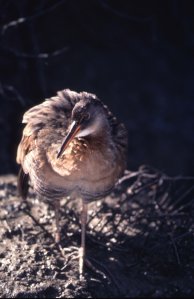 Usually it is hard enough figuring out what’s stressing species right now to figure out which may need protection. Predicting the future — such as how land uses might change — adds another level of complexity. Figuring out the impact of climate change, with its assortment of predictive models, is more complex still.
Usually it is hard enough figuring out what’s stressing species right now to figure out which may need protection. Predicting the future — such as how land uses might change — adds another level of complexity. Figuring out the impact of climate change, with its assortment of predictive models, is more complex still.
A team from PRBO Conservation Science, a non-profit bird ecology research organization, took on the challenge of predicting the vulnerability of California’s bird species to climate change at the behest of the California Department of Fish and Game. The results were released by the science journal PLoS ONE last week.
Instead of applying existing, national models of species vulnerability, the research team developed their own framework. They were able to do this because of the abundance of data unique to California, the paper says.
“What’s most exciting about the study is that our unique approach is one that other scientists and resource managers can duplicate to help them conserve wildlife in the face of climate change,” said Tom Gardali, an ecologist with PRBO Conservation Science and the paper’s lead author, in a press release issued jointly by PRBO and the California Department of Fish and Game.
Read the PLoS ONE paper here. (Open access.)
Read the California Fish and Game release here. (It includes a link to a complete list of vulnerability ratings, by taxa.)
What do the paper’s findings mean on the ground, for California’s birds? Wetland taxa are the most vulnerable, notes a KQED climate blog, and many of the birds found to be vulnerable are found in San Francisco Bay.
The KQED Climate Watch blog says:
“That’s primarily because of sea level rise and also because there are already so many imperiled species that use that habitat in the bay,” says Tom Gardali…
Photo: The clapper rail is one of the at-risk birds identified by the climate change study. Photo courtesy California Fish and Game
